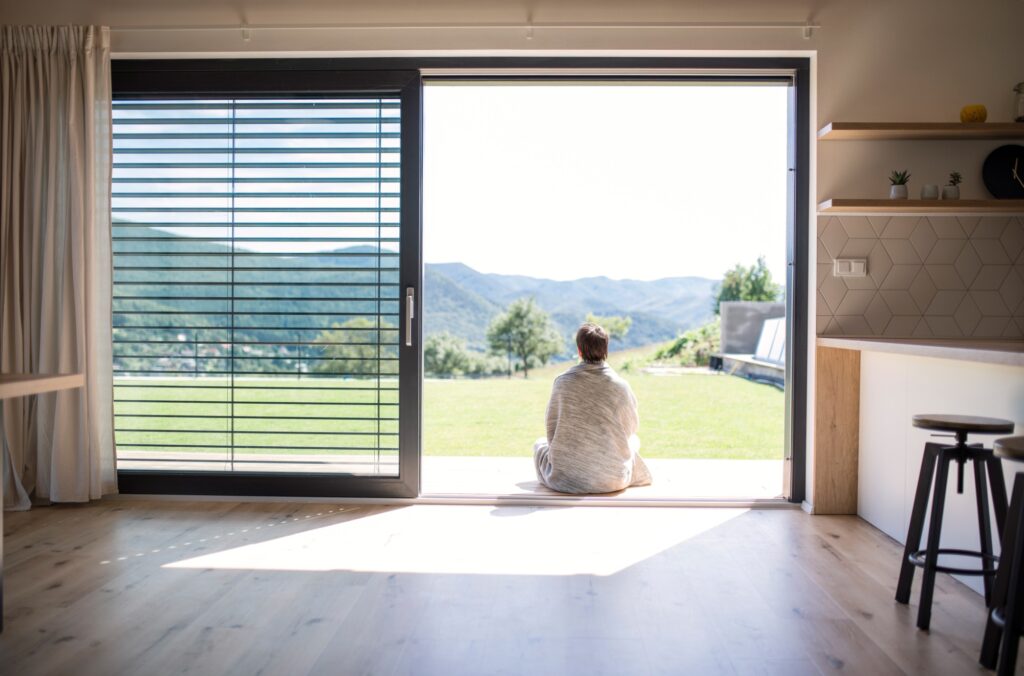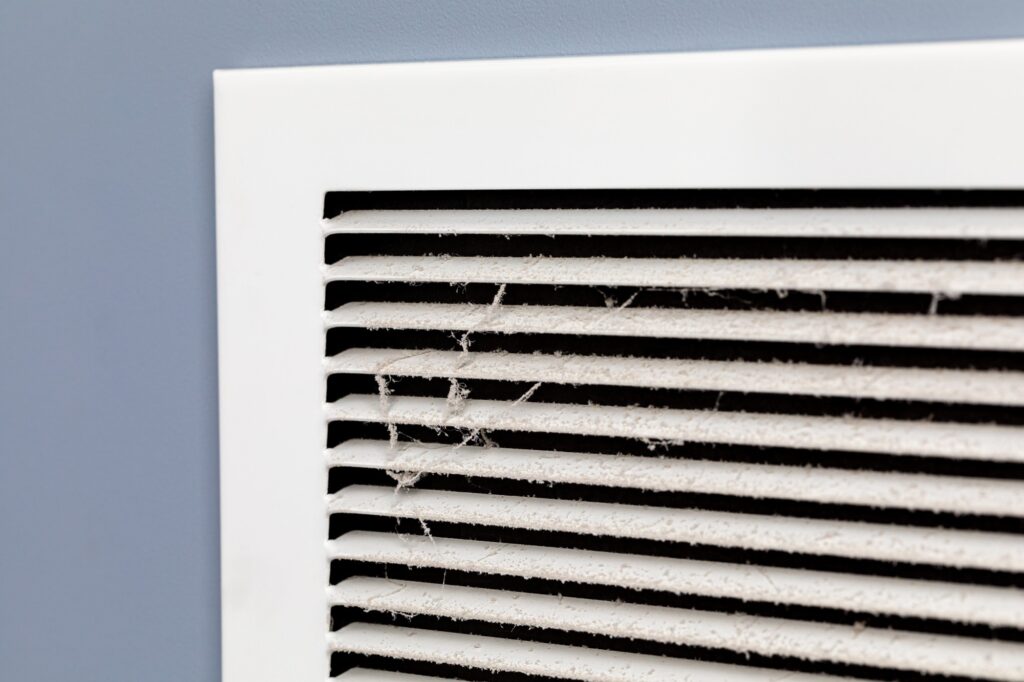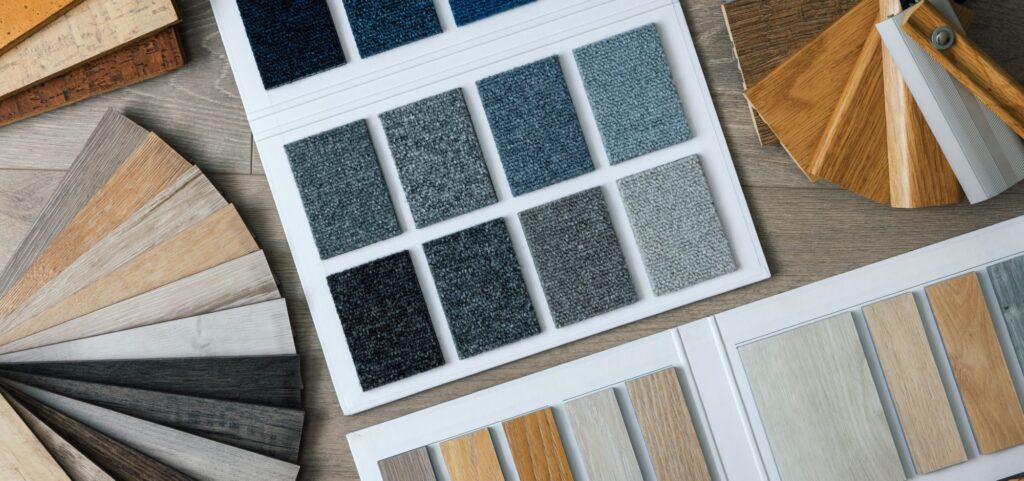

Since you spend most of your time inside, you should pay special attention to your home’s indoor air quality. Your property’s various building materials and household products can affect your health and well-being.
If you’re going to install new flooring soon, choose healthy flooring materials to help prevent illnesses. Use this guide to discover what types of floors would improve your home’s indoor environment.
Understanding Indoor Air Quality
Indoor air quality (IAQ) refers to the condition of the air inside buildings and structures, which significantly impacts the health and comfort of the occupants. Different factors influence IAQ, including the presence of pollutants, the effectiveness of ventilation, and the design and operation of heating and ventilation systems.
Poor IAQ can lead to a range of health issues, such as respiratory problems, headaches, and fatigue. Understanding and managing IAQ is important for creating a healthy indoor environment.
How Flooring Impacts Indoor Air Quality
Since your floors take up such a large space in your home, any chemicals or allergens in them could travel into the air and affect the whole house.


Here are some of the contaminants that could be in your flooring:
1. Volatile Organic Compounds
Some flooring products and finishes contain harmful VOCs like formaldehyde. These gases radiate from new floor surfaces during the off-gassing or emission process and produce an unpleasant odor. Breathing in VOCs can cause short-term and long-term health problems, such as nose and throat irritation, headaches, nausea, liver damage, and kidney damage.
You may find formaldehyde in certain materials such as synthetic carpet fibers and adhesives used during installation. When you want to install your new floors, consult the specialist about low-VOC or no-VOC products and methods. The best flooring for indoor air quality features materials without VOCs.
2. Asbestos
From the 1930s to the 1980s, tile and vinyl sheet flooring contained asbestos to enhance insulation and resistance to damage. Manufacturers stopped using asbestos after realizing that the substance causes severe illness. When inhaled, it can get stuck in the lungs and cause inflammation or even cancer after long-term exposure.
If your home is from the 1980s or earlier and you haven’t updated your vinyl or tile floors, you may have asbestos in your property. The best way to improve your indoor air quality is to get your flooring replaced with a newer, more eco-friendly material.
3. Allergens
Dust, dirt, and pet dander can get stuck in your flooring materials and worsen allergy symptoms if you don’t clean your floors often. Carpeting fibers can trap these contaminants and send them into the air as you walk. To remove debris from your carpet, you can vacuum it weekly, but you should also get it professionally cleaned at least once a year.
Other floor materials are still prone to collecting allergens, but since they have a hard surface, you can easily see dust specks and remove them with a vacuum or mop. If you or your loved ones suffer from allergies or other respiratory conditions, you may want to install low-maintenance, easy-to-clean flooring.
4. Mold
Mold and mildew can grow when your floor is wet for a long time. If you have a mold allergy, you may develop flu-like symptoms from mold exposure, such as a stuffy nose, fever, and shortness of breath. Inadequate flooring installation can also trap moisture in the underlayment. Look for a reliable company that can lay down your floors correctly to prevent mold growth.
Best Flooring for Indoor Air Quality


Here are some healthy flooring materials that you can have installed in your home.
1. Hardwood
For a one-of-a-kind natural beauty, consider installing hardwood flooring in your living space. It’s relatively easy to maintain, and it can add value to your home. When you take care of them correctly, hardwood floors can last for more than half a century before you need a replacement.
This durable, all-natural material doesn’t contain VOCs. To improve your home’s air quality, make sure the specialist uses a water-based polyurethane finish with a low VOC count. Hardwood flooring doesn’t trap contaminants or bacteria, and its hard surface makes it easier to see and clean dust.
2. Luxury Vinyl
Luxury vinyl is a low-maintenance, aesthetically pleasing flooring material. Vinyl flooring is popular in residential spaces, particularly in moisture-prone areas like kitchens and bathrooms, due to its versatility and durability. However, it is important to consider the pros and cons, especially regarding air quality. While vinyl flooring can emit harmful off-gassing during installation, you can ask your flooring specialist about low-VOC options.
Its water resistance can help prevent mold growth on your vinyl floors. You can easily clean up a spill or leak as you notice it. The hard surface doesn’t trap allergens or harmful bacteria. Since it cleans easily, you can use a mild detergent and warm water instead of cleaners with VOCs.
3. Tile
Porcelain and ceramic tile flooring can retain heat to lower your energy costs, and it can look like other materials, such as natural stone or hardwood. These components don’t contain any VOCs because manufacturers use high temperatures to create them.
Tile flooring is resistant to moisture to withstand mold growth, and you can easily clean it with a cloth. Its hard surface makes it easier to clean with a mild detergent instead of harsh chemicals that could reduce your home’s indoor air quality.
4. Laminate
For an inexpensive, low-maintenance addition to your property, consider installing wood laminate flooring. This material comes in various colors and design options that can resemble natural wood or stone. Its resistance to dents and scratches helps prevent contaminants from getting stuck in the planks.
Even though laminate can contain VOCs, your flooring specialist may have low-VOC options in their inventory. Since this material is resistant to moisture, it won’t trap water or encourage mold growth. You can quickly clean up spills with a microfiber cloth or mop. Its hard surface makes it easier to clean off bacteria and other contaminants.
5. Low-Pile Wool Carpet
Carpet can trap sound and make a room warmer in the winter. Brand-new low-pile carpeting comes in various color and texture options to complement your room’s design aesthetic. When considering carpet and indoor air quality, it’s not always the best material for improving your family’s health. A low-pile option with natural wool fibers is the best carpet for indoor air quality.
Synthetic carpeting fibers contain VOCs, but wool is a natural and renewable material free from harmful contaminants. Wool carpet is easier to clean and can even act as a dehumidifier to prevent mold growth. Low-pile carpet has short fibers that act as a hard surface instead of trapping dirt and debris. You can conveniently clean your carpeting with a vacuum.
Strategies for Improving Indoor Air Quality with Flooring
There are several strategies you can implement to improve indoor air quality through your flooring choices and maintenance practices:
- Choose Low-VOC Materials: Choose flooring materials that are low in VOCs and other pollutants. Hardwood floors, for example, are a great option because they are natural and non-toxic.
- Use Low-VOC Adhesives and Finishes: When installing new flooring, use adhesives and finishes that are low in VOCs to minimize the release of harmful chemicals into the air.
- Regular Cleaning: Regularly clean and maintain your floors to prevent the buildup of dust and dirt. This helps to reduce the amount of pollutants present in your indoor environment.
- HEPA-Filter Vacuum or Microfiber Mop: Use a vacuum with a HEPA filter or a microfiber mop to trap dust and dirt particles effectively, preventing them from becoming airborne.
- Increase Ventilation: Improve ventilation in your home by opening windows or using a whole-house fan to allow fresh air to circulate and reduce indoor air pollution.
By following these strategies, you can enhance your indoor air quality and create a healthier living environment for you and your family.
Schedule an Appointment With 50Floor to Improve Your Home’s Indoor Air Quality
When you’re ready for new, healthy flooring, make an in-house appointment with us. We’ll bring floor samples to your home, so you can see how different options look in your desired room.
Ask us about our low-VOC or no-VOC flooring options to improve your home’s air quality. For more information, feel free to call us at (877) 926-3001 today!



